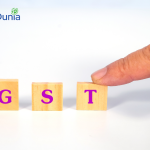Deferred Tax Assets and Liabilities Under Accounting
The documentation of income tax presents significant complexity to financial reporting because it demands steps to record present tax commitments and future tax expenses and reductions. This aspect of complexity results from deferred tax assets and deferred tax liabilities as fundamental elements. Such distinctions between financial and tax requirements will need to be included to show timing differences in income and expense recognition. This article will discuss deferred tax assets and liabilities and how to calculate them.
What Are Deferred Tax Assets and Liabilities?
The difference between accounting regulations under GAAP or IFRS and tax law compliance methods generates deferred tax assets (DTA) and deferred tax liabilities (DTL). Temporary differences in tax expenses occur because of timing fluctuations which result in both forward and backward tax obligations.
Companies use DTA to record the income taxes they have given in advance or have paid more than required. The expectation that future tax payments will decrease forms the basis of such assets. A DTA develops when a company sustains higher taxable income than accounting income because it has paid taxes over the required tax rules. Future financial periods will generate enough tax refunds to let the company recover its remitted excess funds.
The tax obligation of a company for future payments falls under Deferred Tax Liability (DTL). Taxable income which is lower than accounting income leads to the development of this situation. The company shifted tax responsibilities from the current period into future times.
How Deferred Tax Assets and Liabilities Work
Accounting income differs from taxable income mostly through depreciation, provisions, tax credits, and other financial elements. This explanation requires two scenarios that illustrate how accounting income differs from taxable income.
Example 1: Depreciation
For its accounting records, the business implements straight-line depreciation methods on its equipment assets.
Tax Depreciation entails the company choosing accelerated depreciation methods that generate elevated depreciation expenses in initial yearly reporting periods.
The company generates lower taxable income than accounting income in early years thus creating a deferred tax liability. When depreciation amounts between accounting and taxation become equal in later years the company will experience reduced tax obligations because of its deferred tax asset.
Example 2: Warranty Provisions
During product sales, a company should deduct warranty costs from its current-year revenue through warranty expense accruals according to expected warranty service fees.
Warranty costs become a tax-deductible expense for the company under tax laws only when the expenses materialize.
The company establishes a deferred tax asset from this situation because they have taken the expense for accounting whereas the tax benefits will only apply after they pay the warranty claims in the future.
How to Calculate Deferred Tax Assets and Liabilities
The calculation requires the multiplication of tax rate factors with temporary differences between book value and tax base of assets and liabilities.
The basic formula is:
Deferred Tax Asset or Liability = Temporary Difference × Tax Rate
Impact on the Financial Statements
- On the Balance Sheet: Deferred tax assets and liabilities are classified as non-current assets and non-current liabilities. They are typically recognized based on management’s assessment of the company’s ability to utilize these assets in the future or settle liabilities. If the company cannot utilize a deferred tax asset in the future, it must write it off or reduce its value.
- On the Income Statement: Changes in deferred tax assets and liabilities are recognized in the income statement as part of the provision for income taxes. When deferred tax liabilities reverse (i.e., when taxes are paid), the company recognizes a tax benefit. Similarly, when deferred tax assets are utilized, the company recognizes a tax expense reduction.
Get Started with TaxDunia
Understanding deferred tax assets and liabilities is vital for both investors and companies. These items reflect the timing differences between the recognition of income and expenses for accounting and tax purposes. By properly accounting for deferred taxes, a company ensures that its financial statements accurately represent its future tax obligations and benefits. Reach out to TaxDunia for business advice and registration. Our team of seasoned professionals will help you calculate assets and liabilities so that your company can accrue the benefits.












